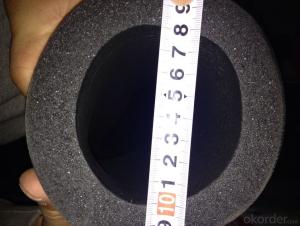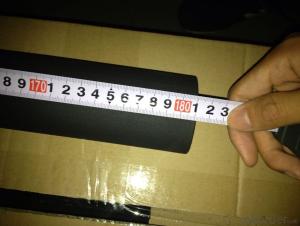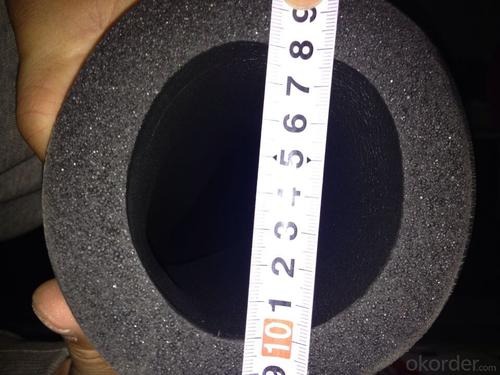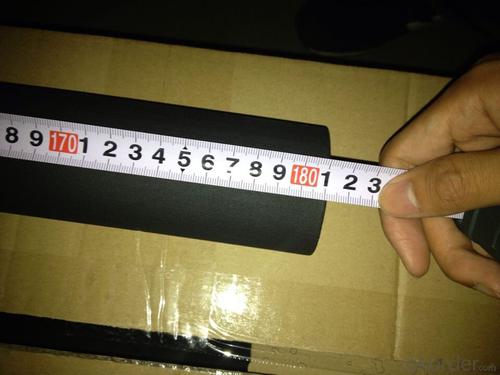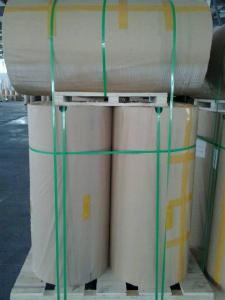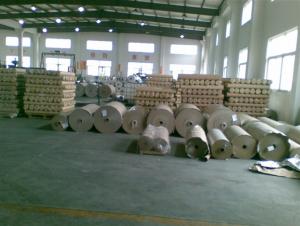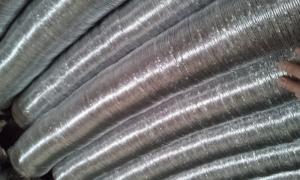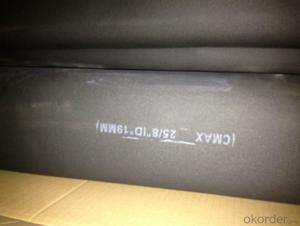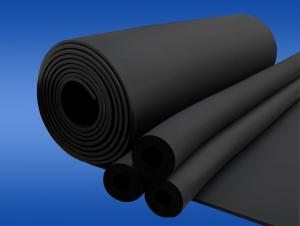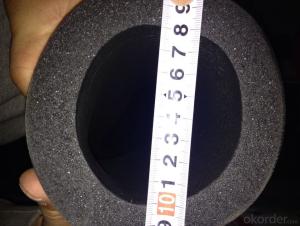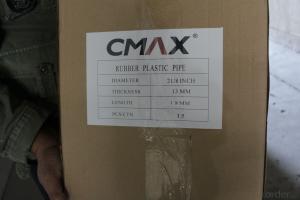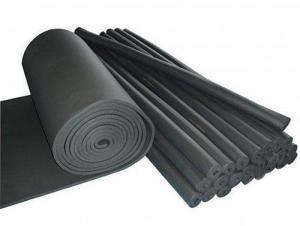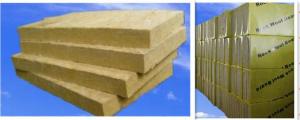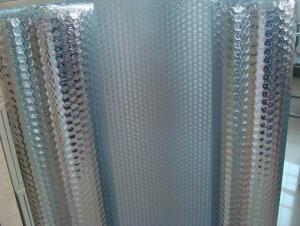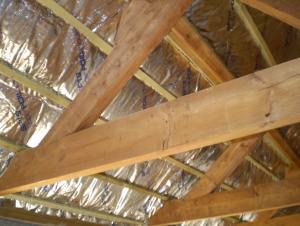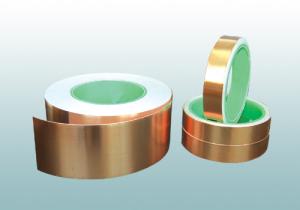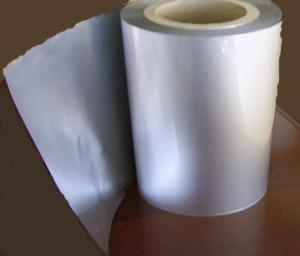Class 1 Rubber Plastic with Aluminum Foil Facing
- Loading Port:
- China Main Port
- Payment Terms:
- TT OR LC
- Min Order Qty:
- -
- Supply Capability:
- -
OKorder Service Pledge
Quality Product, Order Online Tracking, Timely Delivery
OKorder Financial Service
Credit Rating, Credit Services, Credit Purchasing
You Might Also Like
CMAX Rubber Plastic Product advantages:
Fire-blocking, Low Conductivity factor, Good pliability, Closed pore foaming, Good damp-proof property, Vibration resistance, Easy to install and beautiful appearance
| Item | Unit | Specification | Standard | |
| Density | Kg/m³ | ≤95 | GB/T6343 | |
| Oxygen index | % | ≥32 | GB/T2406 | |
| Flammability | SDR | —— | ≤75 | GB/T8627 |
| Conductivity factor | W/(m.k) | |||
| Average temperature | ||||
| -20°C | ≤0.031 | GB/T10294 | ||
| 0°C | ≤0.034 | |||
| 40°C | ≤0.036 | |||
| Watervapor permeability | Coefficient | g/(m.s.pa) | ≤2.8*10-11 | GB/T17146-1997 |
| Factor | —— | ≥7.0*10³ | ||
| Water absorption ratio in vacuum | % | ≤10 | GB/T17794-2008 | |
| Dimension stability | % | ≤10 | GB/T8811 | |
| 105±3°C,7d | ||||
| Crack resistance | N/cm | ≥2.5 | GB/T10808 | |
| Compression resilience ratio | % | ≥70 | GB/T6669-2001 | |
| Compression time 72h | ||||
| Anti-ozone | —— | Not cracking | GB/T7762 | |
| Ozone pressure 202mpa | ||||
| 200h | ||||
| Aging resistance | —— | Slightly crumpling, | GB/T16259 | |
| 150h | no cracks, | |||
| Temperature | °C | -40°C——110°C | GB/T17794 | |
- Q: What are some safer alternatives to aluminum for food packaging?
- <p>Yes, there are several alternative materials for food packaging that are considered safer than aluminum. These include biodegradable materials like PLA (polylactic acid), which is derived from renewable resources like corn starch. Paper-based packaging is also a popular choice, often coated with wax or other materials for added protection. Additionally, glass containers are a non-toxic and reusable option. Some companies are exploring innovative solutions like mushroom-based packaging and edible packaging made from seaweed. These alternatives aim to reduce environmental impact while maintaining food safety and quality.</p>
- Q: This question asks for guidance on preparing a nutritious meal using aluminum foil as a cooking method.
- <p>To make a healthy meal using aluminum foil, consider 'foil packet cooking'. Choose lean protein like chicken or fish, and pair it with a variety of colorful vegetables such as bell peppers, zucchini, and cherry tomatoes. Season with herbs, garlic, and a drizzle of olive oil. Fold the foil to create a sealed packet and bake in the oven at 400掳F (200掳C) for about 20-25 minutes or until the protein is cooked through and the vegetables are tender. This method retains nutrients and flavors while minimizing added fats.</p>
- Q: Is it possible to use aluminum foil as a cooking utensil for stir-frying or sauteing food?
- <p>While aluminum foil can be used in some cooking applications, it is not recommended for stir-frying or sauteing due to its low melting point and potential for tearing. Aluminum foil can melt at high temperatures, which are often used in stir-frying and sauteing, leading to a fire hazard or uneven cooking. Additionally, the foil may tear or puncture easily, releasing aluminum particles into the food, which is not safe. Instead, use proper cookware like non-stick pans or stainless steel for these cooking methods.</p>
- Q: This question asks for a method to clean oil stains that have occurred on aluminum foil used to cover food in a microwave.
- <p>To clean oil stains from aluminum foil used in the microwave, first let the foil cool down to avoid burns. Then, gently wipe the surface with a paper towel to remove excess oil. For stubborn stains, mix a solution of warm water and dish soap. Dip a soft cloth or sponge into the solution and gently scrub the foil. Rinse with warm water and dry thoroughly. For severe stains, you can also use a mixture of baking soda and water to create a paste, apply it to the stain, let it sit for a few minutes, then scrub and rinse. Always check the manufacturer's guidelines for cleaning aluminum foil as some may have specific recommendations or restrictions.</p>
- Q: Describe the most effective methods for utilizing aluminum foil in cooking.
- <p>Aluminum foil facing can be used effectively in cooking in several ways: 1) As a barrier to prevent food from sticking to the pan or grill, reducing the need for oil or butter. 2) To wrap foods for steaming, which helps retain moisture and flavor. 3) As a cover to keep food warm after cooking or to prevent overcooking. 4) To create packets for cooking fish, vegetables, or other foods en papillote, which steams the food in its own juices. 5) For baking, it can be used to line pans to prevent sticking and to make cleanup easier. 6) Foil can also be shaped into a tent to cover food during the last few minutes of cooking to prevent it from drying out. Always ensure the shiny side of the foil faces inwards when in contact with food to avoid any potential chemical reactions with the food.</p>
- Q: Explain the various applications of aluminum foil facing in different contexts.
- <p>Aluminum foil facing can be used in various ways depending on the application. In construction, it serves as a vapor barrier to prevent moisture from affecting the insulation. In packaging, it's used for food preservation, providing a barrier against air and light, which helps to keep food fresh. In the automotive industry, it's used for heat reflection and insulation in car engines. It's also used in the manufacturing of reflective materials and in art for creating unique textures and effects. Additionally, aluminum foil facing is utilized in the aerospace industry for heat shielding and in the medical field for sterilization purposes. Each application leverages the properties of aluminum foil, such as its light weight, durability, and heat resistance.</p>
- Q: What are the potential hazards or dangers of using aluminum foil facing in construction or other applications?
- <p>Using aluminum foil facing can pose certain risks, particularly in construction. It may not provide adequate insulation, leading to energy inefficiency. Additionally, it can trap moisture, causing mold or mildew growth and potential structural damage. Aluminum foil facing can also be a fire hazard if it's not properly installed or if it comes into contact with electrical wiring. Moreover, it may not be as durable as other materials, leading to a shorter lifespan and the need for more frequent replacements. It's crucial to consider these factors and consult with professionals when deciding to use aluminum foil facing in any application.</p>
- Q: Can aluminum foil be used as a material to create a pot holder?
- <p>Yes, aluminum foil can be used to make a pot holder. It's a versatile material that can withstand high temperatures, making it suitable for this purpose. Simply cut a piece of aluminum foil to the desired size, fold it in half, and use it to protect your hands from heat when handling pots and pans. However, for repeated use or a more durable solution, consider using heat-resistant materials like silicone or fabric specifically designed for pot holders.</p>
- Q: Is it possible to recycle aluminum foil with a facing layer? If yes, what is the process involved?
- <p>Yes, aluminum foil facing can be recycled. The process typically involves separating the aluminum from the facing material. This is done by specialized recycling facilities that use methods such as shredding, washing, and magnetic separation to remove impurities. The aluminum is then melted down and repurposed into new products. It's important to check local recycling guidelines, as some facilities may not accept foil with a facing layer due to the difficulty in separation or the presence of non-recyclable components.</p>
- Q: Is it possible to use aluminum foil facing in the creation of desserts?
- <p>Yes, aluminum foil facing can be used for making desserts, particularly for baking purposes. It is often used to line baking sheets or molds to prevent desserts from sticking, making them easier to remove after baking. It also helps in maintaining the shape and presentation of the dessert. However, it's important to ensure that the foil does not come into direct contact with the dessert if it's not oven-safe, as this could lead to contamination or uneven cooking. Always follow the manufacturer's guidelines for the specific type of aluminum foil you are using.</p>
Send your message to us
Class 1 Rubber Plastic with Aluminum Foil Facing
- Loading Port:
- China Main Port
- Payment Terms:
- TT OR LC
- Min Order Qty:
- -
- Supply Capability:
- -
OKorder Service Pledge
Quality Product, Order Online Tracking, Timely Delivery
OKorder Financial Service
Credit Rating, Credit Services, Credit Purchasing
Similar products
Hot products
Hot Searches
Related keywords
